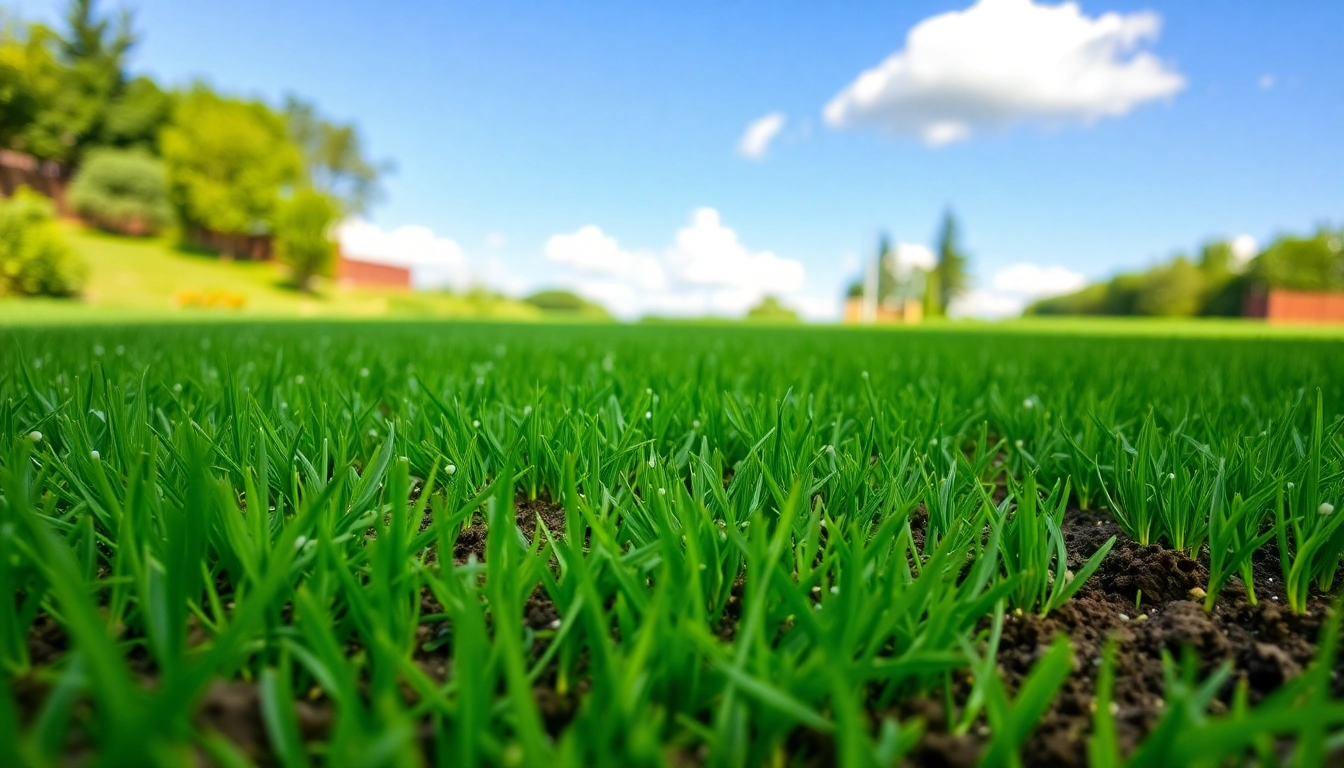Mastering Over Seeding: A Comprehensive Guide to Revitalize Your Lawn
Understanding Over Seeding
What is Over Seeding?
Over seeding is the practice of planting grass seed directly into existing turf without tearing up the turf or the soil. It serves as a simple yet effective method to fill in bare spots, enhance the overall density of your lawn, and improve its color and vibrancy. By doing this, you introduce new grass varieties into your existing lawn, which can boost resilience against diseases and pests.
This technique is especially popular among homeowners and lawn care enthusiasts who want to revitalize their lawns without undergoing the drastic measures of removing all grass or sod. Properly executed, over seeding can transform a lawn, making it lush and more manageable.
Benefits of Over Seeding for Your Lawn
Over seeding comes with multiple benefits that extend beyond mere aesthetic enhancement. Some of the key benefits include:
- Enhanced Lawn Density: Over seeding fills thin patches and creates a denser lawn, which helps prevent weeds from taking hold.
- Improved Disease Resistance: Introducing new grass seeds can result in a lawn that is more resilient to diseases and pests.
- Better Color and Appearance: Fresh seeds often lead to a greener and more vibrant lawn, especially if new blends are chosen that are more resistant to local conditions.
- Soil Erosion Prevention: A thick lawn reduces soil erosion by stabilizing topsoil, making it beneficial for environmental health.
- Water Efficiency: A denser turf can retain moisture more effectively, reducing the need for additional watering.
Common Misconceptions About Over Seeding
Despite its numerous benefits, many misconceptions surround over seeding:
- Over seeding is just for bare spots: While ideal for filling gaps, over seeding can rejuvenate the entire lawn.
- You only need to do it once: Lawns can benefit from regular over seeding, particularly if they face wear and tear from foot traffic or pest issues.
- It’s not necessary for established lawns: Even healthy lawns can benefit from over seeding as it brings in genetic diversity and improves vigor.
When is the Best Time to Over Seed?
Seasonal Considerations for Over Seeding
The timing of over seeding can significantly impact the success of the process. Generally, the best results are achieved in:
- Late Summer to Early Fall: This season provides optimal conditions for seed germination due to warmer soil temperatures and consistent moisture levels.
- Spring (if conditions allow): Early spring is another option but has risks of competing with existing weeds. This also depends on local climate conditions.
Soil Temperature and Moisture Levels
For successful germination, soil temperature and moisture levels are crucial. Here’s what to consider:
- Ideal Soil Temperature: Grass seeds generally germinate best when soil temperatures are consistently between 50°F and 65°F (10°C to 18°C).
- Moisture Levels: Soil should be adequately moist but not saturated. Regular light watering will promote healthier seedling growth.
Timing Your Over Seeding for Optimal Growth
To have a thriving lawn post-over seeding:
- Conduct a Soil Test: This assesses nutrient levels and pH, allowing you to select the right seed mix and any additional amendments.
- Observe Historical Weather Patterns: Anticipating weather trends aids in choosing the right window for seeding.
- Plan for Maintenance: Ensure you can provide adequate maintenance post-seeding, as new grass requires consistent care during its establishment phase.
How to Prepare Your Lawn for Over Seeding
Assessing Lawn Health Before Over Seeding
Before beginning the over seeding process, assess the health of your existing lawn. Look for:
- Weeds: An overwhelming weed population can thwart seeding efforts. Consider weeding or using a preemergent herbicide before seeding.
- Thinning Areas: Identifying specific locations that could benefit most from over seeding will inform your approach.
- Pest or Disease Signs: Treat any underlying issues that may disrupt the success of your over seeding efforts.
Techniques for Mowing and Raking
Proper preparation is essential for effective over seeding:
- Mow Lower: Mow your grass shorter than usual (about 2-3 inches) to expose the soil.
- Bag Clippings: This prevents a thick layer of clippings from smothering the seeds.
- Rake the Lawn: Raking helps with seed-to-soil contact by loosening the surface and removing debris.
Choosing the Right Seed Mix for Your Lawn
Selecting the best seed variety for your local climate and lawn type is crucial. Factors to consider include:
- Grass Type: Choose a grass type that matches existing grass or one that thrives in your region.
- Sun vs. Shade: Determine whether the areas needing attention are sunny or shaded to match your seed to the right conditions.
- Local Adaptations: Use seeds that are adapted to local soil and climate conditions for improved growth success.
Step-by-Step Guide to Over Seeding
Tools and Materials Needed for Over Seeding
Having the right tools ensures a smooth and effective over seeding process:
- Spreaders: Use a broadcast or drop spreader for even seed distribution.
- Rake: A rake is essential for both preparing the area and helping with seed embedding.
- Hoses or Watering Equipment: Ensure you can adequately water your lawn after seeding.
- Starter Fertilizer: This supports seed germination and growth of new grass seedlings.
Applying Seed: Techniques and Tips
The process of applying seed directly affects outcomes:
- Even Distribution: Aim for a uniform spread of seeds across your lawn to prevent patchy growth.
- Seed Depth: Seeds should ideally be in contact with the soil; avoid burying them too deep. A light raking can help.
- Water Immediately: Water the area lightly right after planting to begin seed germination while avoiding washouts.
Post-Over Seeding Maintenance Practices
Taking care of your lawn after seeding is imperative for successful establishment:
- Watering Routine: Water daily or every other day, depending on weather conditions, to keep the soil moist.
- Avoid Heavy Foot Traffic: Keep off the lawn to prevent compacting the soil and damaging tender new grass.
- Fertilizing: A slow-release fertilizer can support growth without overwhelming young plants.
Evaluating Results and Troubleshooting Over Seeding
Signs of Successful Over Seeding
After a successful over seeding, you can identify growth through:
- Thickening Turf: A noticeable increase in density is a primary indicator of success.
- Vibrant Color: Fresh grass typically has a richer green hue.
- Maintained Growth: It’s essential to continue proper maintenance for the new grass to thrive fully.
Common Issues and Their Solutions
Even with careful execution, challenges may arise:
- Seed Not Germinating: This could be due to poor seed-to-soil contact, inadequate watering, or improper soil temperature. Rake the area lightly, ensure it’s moist, and respectful of the temperatures.
- Weed Growth: A common challenge, weed competition can be managed by monitoring the lawn and using selective herbicides when safe for new grass.
- Patchy Growth: Resulting from uneven seeding, you may need to overseed sparse areas again.
Long-Term Care for Your Overseeded Lawn
Post-establishment care for your overseeded lawn can help maintain its health:
- Regular Mowing: Mow regularly but allow new grass to establish solid roots before cutting too short.
- Fertilization Schedule: Continue a regular fertilization program to ensure the lawn remains healthy and lush.
- Pest Monitoring: Keep an eye on pest populations as new grass can be particularly vulnerable.



